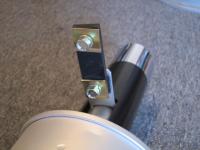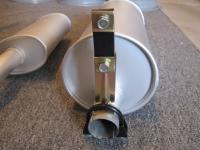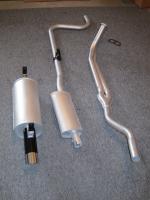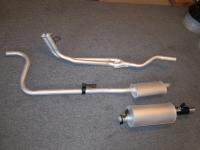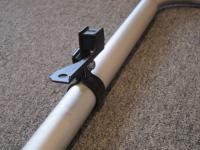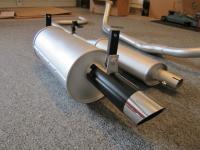Everything posted by AZ-240z
-
240z fuel and brake line insulator sets and steering rack expansion reservoir
Thanks, Steve. They (the clear defroster wire boots) look good and definitely are very obvious, especially when burnt or discolored! Very nice work. Dan Steve, just as a point of interest, the brake booster insolator donut, as originally produced, I believe was made out of red rubber, on early cars anyway. I am not 100% with this, but am pretty sure, and would welcome any more accurate info.
-
240z fuel and brake line insulator sets and steering rack expansion reservoir
Steve, Do you have any of these clear defroster wire boots available for sale, and the asking price, if so? Also looking forward to the choke cable firewall grommets when have them in original, early style. Thanks for all of your efforts with these projects to re-create hard to find parts. Dan
-
70-71 owners, I need help with a project
I'm just going to have to chime in. The later, angled version is probably still available, or can be found without too much difficulty, I am sure, in NOS condition. The only reason to want one of the early grommets, without the angular modeling and flared end of the nipple, as it seems to appear in Webmasinic70's photos, is because that is what it was "originally" for early cars. Forty year old rubber is going to dry rot and split. I can wait for the sake of acquiring a good reproduction of the authentic item. New rubber bends. Dan
-
70-71 owners, I need help with a project
Steve, just a couple of observations. Looking at webmanic70s picture, it looks like the nipples have split from the angular stress of the cables, and, it doesn't appear to have a lip molded into the ends of each nipple as you did with your sample. Are you sure the originals were molded with the upward slant of the nipples like the more recent grommet style? I'm probably not seeing this correctly, but just needed to ask. Too bad that someone doesn't have a good, original, example for comparison. If I can source one, I'll certainly post any helpful information. Many thanks for all of your work in providing a much needed source for important, original parts. Dan
-
fuel smell only with windows down
I'm probably not going to explain this well, but here is my reasoning. With the window open, or down, there is a venturi effect at the window,. ie., an area of low pressure resulting from outside air passing over the car which will tend to draw the cabin air past the drivers seat and out the window. This area of low pressure created inside the car will draw air into the car's cabin from any orifice that is not properly sealed,. ie., worn or missing grommets, worn or ill fitting weatherstripping around doors and rear hatch, tail lights, body seams at edges of rear deck flooring not sealed, leaking fuel filler tubes, hoses, and hose clamps in the right quarter panel void, and the list goes on. Any number of the correct grommets and floor plugs are readily available, either NOS or aftermarket and well worth the cost. I removed all of the interior plastic finisher panels, carpeting, and anything else I suspected might hide a leak. All grommets, weatherstripping, and plugs are either NOS or, when NOS was not available, reproductions, and along with the use of 3M body seam sealer, I have no intrusion of gas or exhaust smells in my restoration. I believe there are any number of threads that give very good explanations of this problem discussed in the past. The down side of all of this, is, I cannot shut any door or hatch without cracking a window. Dan
-
Refreshing your windshield washer bottle!
Jerry, I fully understand, and that is good information about the reproduction bottles. I just bought a set of the very early NOS door weatherstrip WELTING (big bucks) on ebay. Although my welting was Nissan, and correct, (same as kats has on his blue 240z) it was the later welting. The early welting (first time I have ever seen the early welting anywhere) has a little smaller cross-section profile and a slightly bolder texture. Each door also uses two separate pieces of welting, an A and a B section with the ends cut on a 45 degree bia for a perfect fit. Now, every morning I just sit in the car admiring my new, more correct, welting. So, I totally agree, Jerry. There is really nothing better than NOS when you can find it. Dan
-
Refreshing your windshield washer bottle!
Jerry, Nice job on the refresh! Just thought I would mention, for those whose bottles and motors are too far gone, Banzai Motorworks now sell very nice repros for, I think, $195. I have no interest in this product, just passing along info to those who aren't farmiliar with the current market of products available from various sources. Dan
-
Putting Dashboard back in, parking light fuse keeps blowing
- OK Inspection Sticker in right quarter window.
Jerry, Go to "OK Inspection Decals" thread started by Mike B on 08-22-09. It has what I think you are looking for. If I knew how to post the address for this thread,I would have done it so. Not very computer literate but I going to get my son to do some tutoring. I just plugged that thread into the search function which took me to pages of associated threads. You will find this thread there a couple of pages in. Dan- Oddessey
Hope It works for you Jerry. Is the weatherstrip the early style with separate welting, or is it the later style with the welting and weatherstrip fused together in one piece? To see where it may be binding, sit in the car with a sheet of paper and concentrating on the front part of the door opening. Place the paper against the weatherstrip, starting maybe at the top of the window frame, and hold the door closed to the point it starts to bind and see if the paper slips out easily, or if that is the place it is binding. Do this progressively around the front half of the door,weatherstrip interface until you find where it is binding. Next, I would make sure that the welting is firmly seating on the body pinch-weld all the way around the door. I am trying to remember another difference in early and late weatherstripping. I think that the one-piece, welting/weatherstrip combo, incorporated a flap of rubber that covered the windshield post jamb area. If that is what you have, make sure that the binding isn't happening in that area. I also recall that this later weatherstrip is a little thicker along the bottom door threshold. I think that on later zs, the bottom of the door was shaped slightly differently along this threshold area, but I could be wrong, or that might be a problem area. I believe that this one-piece combo welting/weatherstrip was using after 7/74. Anyway, Jerry, I am just kind of brainstorming and thinking out loud. If any of this makes sense for things to check, I, again, hope that my past experiences can be of some use. When I read what you have done and how you have done it, I feel like I'm looking in a mirror. Dan- Oddessey
- What color were stock 240Z springs?
Sorry, but I miss-spoke in my reply, as it was late! The right front color code paint dab should be blue, not white.- What color were stock 240Z springs?
Brian, The springs could very well be stock. The correct color would have been a semi-gloss black, but depending on the location, each spring was coded with a splash of color. The rear springs had a white dab of paint, the right front had a white dab of paint, and the left front had both a red and a blue dab of paint. Do a search on stock springs and I am sure you will find a nice picture and explanation of what you need. Dan- Dog leg trim question...
Glad I could help, Mike. The secret is using the thinnest sheet steel you can find. I got a two foot square sheet at home depot. The clips can be somewhat adjusted to fit a little more thickness in the backerboard, and once fastened with the glue, will be plently strong to hold the clips without bending the washers. The clips do need to be adjusted so that they fit the holes in the body securely, but not so tight that prying them off will damage the trim piece which usually happens, especially if the trim piece has seen any water damage over the years. Dan- Dog leg trim question...
I would recommend taking one of the clips off of the trim panel and seeing how they fit by hand. The clip can be adjusted with some pliars to either widen or pinch the clips for the best fit. I needed to do that with all of mine for both door panels, which did have the plastic cups, and both dog leg panels, which don't use the plastic cups. It is very easy, given the fragility of the masonite backer board, to break the mounting holes in the backer board, and then you have a bigger problem. This was what worked for me, so good luck, and be careful. Dan Edit: The thing that brought me to adjusting the clips that were too big right out of the bag for the holes was, I did crack one of the mounting holes in the backer board. My fix, for anyone experiencing the same problem, was to get a sheet of super-thin gage steel, cut some large washers that would fit without going over the edge of the board, with correct hole size, and using gorilla glue to fasten one on each side of the backer board hole. steel has to be very thin to allow clips, with a little tweeking, to fit the backer board opening. You will have to peal the vinyl away from the area to do the inside washer, but easy to do and works and looks perfect. If you use gorilla glue, apply it very sparingly and clamp tightly as this glue will try to expand making for a larger sandwich than you want.- '73 240Z - The subtractive process...
Do you still have the emissions air pump shown here? If so, and it works correctly without squeeks and chirps normally associated with noisy bearings and seals, these could be useful to a restorer concerned with originality. The bearing and seal kits to rebuild these emissions pumps are NLA. Same thoughts apply to the A/C system also shown in posts which appears to be in very nice condition, another important item, even though it is a dealer add-on. Dan- mechanical throttle linkage, what's the problem ?
Bart, It is a design short-coming in the geometry of the 240z throttle linkage, and plagues every car. I have heard that it is possible to solve this problem by re-configuring some of the linkage attachment points, but I have not done any further investigation. I'm sure someone here has attempted to do a modification to the linkage to allow for a smoother accelerator pedal application. Dan- Splash Pan
Thomas, Does your splash pan have a drain hole in the front right corner? If so, it is for cars produced after 09/74, and wouldn't fit an early 240Z. It was made to accomodate a radiator that extends lower below radiator support.- What radiator hoses to get?
Stanley, I have used rad hoses and heater hoses, lightly used and OEM, that came off of my restoration in favor of factory braided hoses. All hoses are soft and maybe 8 years old with about 4,000 miles of use. Car is a garage queen. PM me if interested in a "PAY IT FORWARD" deal and I'll even throw in free shipping. Dan- ? on exhaust hangers
Since I'm an originality GEEK, thought I would show the NOS OEM hangars I found when restoring my series 1 car. Stuff like this is still out there, just takes a lot of patience. Dan- fan?
Hello Ken, To be correct, the squirrel cage fan should be metal for series 1 cars. No sure when the use of plastic started, but I seem to remember that the pastic would put out a little more volume, but was interchangeable with the metal fan squirrel cage fans. Dan- 240z seat belt center console strap
I'll try to give you an educated guess. The parts CD offered by Classiczcars, lists two part numbers for this item. Under the catagory, body, L24, up to 7/73. The first part number is 86823-E8800. E8800 part numbers are generally for cars manufactured up to 6/72. The second part number is 86823-N3300. N3300 part numbers are generally for cars manufactured from 7/72 to 7/73. I can tell you that my 1/71 series 1 car did not have this seat belt holder, and part numbers for cars manufactured up to 1/71 generally have part numbers ending in E4100, so my assumption would be that this holder started in use sometime between 1/71 and 6/72. The parts CD does not list any dates of use. Hope this helps. Dan- What does a failing Harmonic Balancer sound like?
My two cents, as an aside. Generally, when tightening belts, I believe people have a tendancy to over-tighten, putting undue stress on drive shaft bearings and seals associated with whatever is being driven. When the recommended slack is, say, 1", I try to err on the loose side. I would rather re-adjust for any slipage resulting. Dan- Controls for "factory" air conditioning on my '72 Z.
You are quite welcome, Charlie. Glad I could be useful. Dan- Controls for "factory" air conditioning on my '72 Z.
When you say "factory Air Conditioning", I think you mean "dealer installed Air Conditioning". I think Factory air was not available until August of 1973. For a dealer installed system, at least on earlier series 1 cars with Frigi-king units, all heater/vent function control levers should be in the left, OFF, position. Your system should have an air conditioning controller mounted either at the bottom edge of dash below the emergency flasher switch for Frigi-King, or on the front, left edge of the center console for another dealer installed manufacturer which I can't remember right now. With this controller you can turn the A/C on or off. The reason, on early Frigi-King cars, that the top OFF-VENT-HEAT slide lever on the heater control panel needs to be in the OFF position is: 1. A mirco-switch is installed at this vent door actuator cable located behind the fan motor on the passenger side under the dash. You can follow this actuator cable up to the right side of the heater plenum behind the heater fan motor/squirrel cage housing to locate where this micro-switch is installed at the pivot point of this vent door cable actuator. 2. If the air conditioning controller is left in the ON position, moving the top heater control lever from VENT to OFF will turn the Acompressor on, and visa versa. I used to just leave my A/C controller in the ON postion, and would turn my A/C on or off by must moving this top heater control slide lever between VENT and OFF to controll the A/C. I welcome any corrections to this analysis, and hope this explanation is helpful. Dan - OK Inspection Sticker in right quarter window.
Important Information
By using this site, you agree to our Privacy Policy and Guidelines. We have placed cookies on your device to help make this website better. You can adjust your cookie settings, otherwise we'll assume you're okay to continue.





